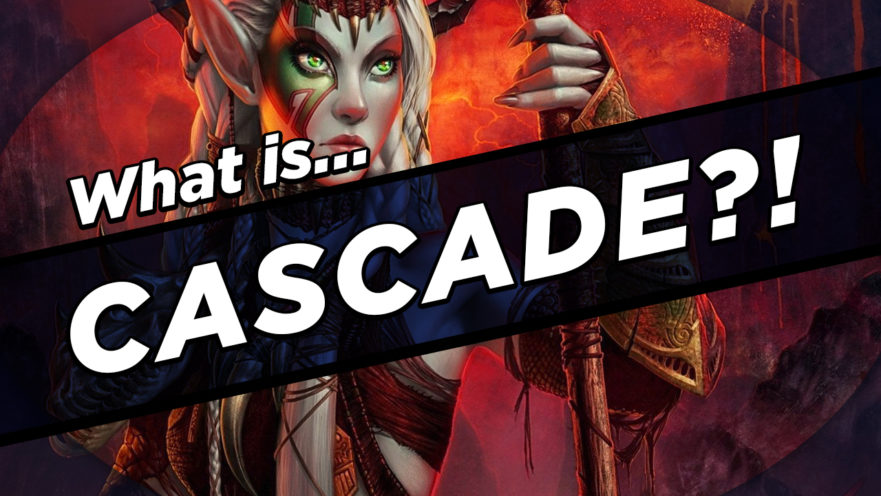When you’re first learning to play Magic, one of the hardest lessons to learn is how to manage your mana. Oftentimes, you’ll have a hand full of exciting spells to cast, and figuring out which ones to prioritize casting — or in what order you should sequence your spells — can be tricky.
But what if we told you that there was a way to cast two spells in a turn, without even paying the mana cost of the second spell? That would surely give you a huge board advantage and have a cascading effect on the rest of the game…
What is Cascade?
Cascade is a triggered ability first introduced in 2009’s Alara Reborn. Whenever you cast a spell that has cascade, you get to exile cards from the top of your library until you find a spell with a lower converted mana cost than the spell with cascade. Then, you may cast that spell without paying its mana cost; the rest of the cards go to the bottom of your library in a random order.
Note that cascade triggers when you cast a spell with cascade — not when that spell resolves. Here’s a quick example to show you how the timing restrictions with cascade work.
Let’s say you cast a Bloodbraid Elf and cascade into a Tarmogoyf. Before Bloodbraid Elf resolves, its cascade trigger will go on the stack. If the cascade trigger resolves, you resolve the cascade ability and cast the Tarmogoyf. Once the Tarmogoyf resolves, you would then resolve the Bloodbraid Elf.
Also keep in mind that you don’t have to cast the spell you cascade into. If you cascade into a discard spell when your opponent has no cards in hand, or if you cascade into a counterspell at an inopportune time, no harm done. The card simply goes on the bottom of your library with the rest of the spells you exiled with cascade.
Deck Spotlight: Living End

There are a number of powerful spells with cascade in Magic‘s history. The Bloodbraid Elf–Tarmogoyf scenario is common in Modern Jund; Shardless Agent saw quite a bit of play in Legacy; entire Commander decks are built around cards like Maelstrom Wanderer and Yidris, Maelstrom Wielder.
But the best-known deck to utilize the cascade mechanic is Living End. Living End is a combo deck that has seen play in Modern over the years, and it excels at putting a ton of power onto the battlefield quickly.
A Living End deck is primarily consists of large creatures with high converted mana cost that cycle for just one or two mana. In the early turns, you’ll cycle your creatures to fill up your graveyard and draw the cards you need to combo. Then, when the time is right, you’ll cast one of two cards with cascade: Violent Outburst and Demonic Dread. Since Living End is the only card in the deck with a lower converted mana cost than either of these cards, you’ll easily cascade into it and bring all those creatures in your graveyard back to the battlefield.
Living End is a well-known deck from Modern’s history, but it hasn’t seen as much play recently as the Modern format has evolved. But rest assured — as more cards with cycling are printed, Living End fans will keep their eyes peeled for ways to revitalize this classic combo deck.
LEARN MORE!
Check out the rest of our keyword ability primers:
Banding
Companion
Cycling
Deathtouch
Enchant
Encore
Equip
First Strike & Double Strike
Flash
Flying & Reach
Haste
Hexproof
Indestructible
Kicker
Lifelink
Menace
Mill
Mutate
Partner
Phasing
Prowess
Prowl
Trample
Vigilance

